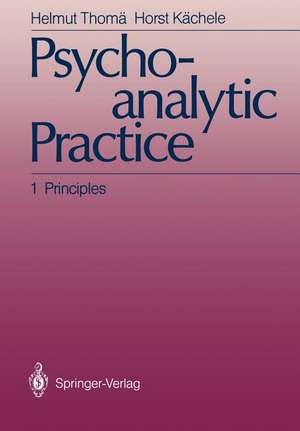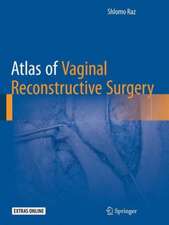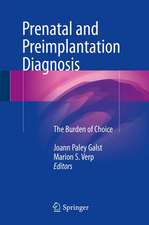Psychoanalytic Practice: 1 Principles
Andreas Bilger Autor Helmut Thomä Prefață de R.S. Wallenstein Traducere de Michael Wilson Manfred Cierpka Autor Horst Kächele Traducere de David Roseveare H. -J. Grünzig, R. Hohage, L. Klöß, J.C. Kübler, L. Neudert, R. Schors, H. Schrenk, B. Thomäen Limba Engleză Paperback – 10 dec 2011
| Toate formatele și edițiile | Preț | Express |
|---|---|---|
| Paperback (2) | 400.65 lei 6-8 săpt. | |
| Springer Berlin, Heidelberg – 10 dec 2011 | 400.65 lei 6-8 săpt. | |
| Springer Berlin, Heidelberg – 20 noi 2011 | 408.37 lei 6-8 săpt. |
Preț: 400.65 lei
Nou
Puncte Express: 601
Preț estimativ în valută:
76.66€ • 80.26$ • 63.43£
76.66€ • 80.26$ • 63.43£
Carte tipărită la comandă
Livrare economică 05-19 aprilie
Preluare comenzi: 021 569.72.76
Specificații
ISBN-13: 9783642714320
ISBN-10: 3642714323
Pagini: 452
Ilustrații: XXVI, 421 p.
Dimensiuni: 170 x 244 x 30 mm
Greutate: 0.71 kg
Ediția:Softcover reprint of the original 1st ed. 1987
Editura: Springer Berlin, Heidelberg
Colecția Springer
Locul publicării:Berlin, Heidelberg, Germany
ISBN-10: 3642714323
Pagini: 452
Ilustrații: XXVI, 421 p.
Dimensiuni: 170 x 244 x 30 mm
Greutate: 0.71 kg
Ediția:Softcover reprint of the original 1st ed. 1987
Editura: Springer Berlin, Heidelberg
Colecția Springer
Locul publicării:Berlin, Heidelberg, Germany
Public țintă
Professional/practitionerCuprins
1 Psychoanalysis: The Current State.- 1.1 Our Position.- 1.2 The Psychoanalyst’s Contribution.- 1.3 Crisis of Theory.- 1.4 Metaphors.- 1.5 Training.- 1.6 Directions and Currents.- 1.7 Sociocultural Change.- 1.8 Convergences.- 2 Transference and Relationship.- 2.1 Transference as Repetition.- 2.2 Suggestion, Suggestibility, and Transference.- 2.3 Dependence of Transference Phenomena on Technique.- 2.4 Transference Neurosis as an Operational Concept.- 2.5 A Controversial Family of Concepts: Real Relationship, Therapeutic Alliance, Working Alliance, and Transference.- 2.6 The New Object as Subject: From Object Relationship Theory to Two-Person Psychology.- 2.7 The Recognition of Actual Truths.- 2.8 The Here-and-Now in a New Perspective.- 3 Countertransference.- 3.1 Countertransference: The Cinderella in Psychoanalysis.- 3.2 Countertransference in Its New Guise.- 3.3 Consequences and Problems of the Comprehensive Conception.- 3.4 Concordance and Complementarity of Countertransference.- 3.5 Should the Analyst Admit Countertransference?.- 4 Resistance.- 4.1 General Factors.- 4.2 Anxiety and the Protective Function of Resistance.- 4.3 Repression and Transference Resistance.- 4.4 Id and Superego Resistance.- 4.5 Secondary Gain from Illness.- 4.6 Identity Resistance and the Safety Principle.- 5 Interpretation of Dreams.- 5.1 Dreams and Sleep.- 5.2 Dream Thinking.- 5.3 Day Residue and Infantile Wish.- 5.4 Self-Representation Theory and Its Consequences.- 5.5 Technique.- 6 The Initial Interview and the Latent Presence of Third Parties.- 6.1 The Problem.- 6.2 Diagnosis.- 6.3 Therapeutic Aspects.- 6.4 Decision Process.- 6.5 The Patient’s Family.- 6.6 Third-Party Payment.- 7 Rules.- 7.1 The Multiple Functions of Psychoanalytic Rules.- 7.2 Free Association: The Fundamental Rule ofTherapy.- 7.3 Evenly Suspended Attention.- 7.4 The Psychoanalytic Dialogue and the Counterquestion Rule: To Answer or Not to Answer, That Is the Question.- 8 Means, Ways, and Goals.- 8.1 Time and Place.- 8.2 Psychoanalytic Heuristics.- 8.3 Specific and Nonspecific Means.- 8.4 Transference Interpretations and Reality.- 8.5 Silence.- 8.6 Acting Out.- 8.7 Working Through.- 8.8 Learning and Restructuring.- 8.9 Termination.- 9 The Psychoanalytic Process.- 9.1 Function of Process Models.- 9.2 Features of Process Models.- 9.3 Models of the Psychoanalytic Process.- 9.4 The Ulm Process Model.- 10 Relationship Between Theory and Practice.- 10.1 Freud’s Prize Question.- 10.2 Psychoanalytic Practice in Light of the Inseparable Bond.- 10.3 The Context of Justification of Change Knowledge.- 10.4 The Differing Requirements for Theories of Pure and Applied Science.- 10.5 Consequences for Therapeutic Action and for the Scientific Justification of Theory.- References.- Name Index.











